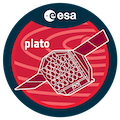Speaker
Description
The current sample of Circumbinary Planets (CBPs) remains very small, comprising only 14 well-characterised planets discovered through transits by Kepler and the TESS mission, along with a few more found using alternative methods. Additionally, there is ongoing debate regarding CBP detections from timing variations in eclipses of post common envelope binaries (PCEBs). CBPs discovered through transits exhibit common features, notably orbits close to the inner stability limit and the absence of very short-period central binaries as CBP hosts. While some features of this sample align with formation models, others, such as the period-range of the central binaries or the coplanarity between binary and planet orbits, may be an outcome of the small sample-size of known CBPs. Our current overview over CBP systems is similar to the early years of general exoplanet discoveries, and CBP systems with less common parameters might simply not have been found yet. PLATO’s potential to provide significant advances in CBP detections will be discussed in terms of the numbers of detected CBPs, and in terms of the increased diversity of future CBP systems. Intriguing is the potential existence of CBPs with strongly inclined orbits relative to the binary system. These pose challenges for their detection and confirmation, which may require substantial follow-up observations. The detection of CBPs is not part of PLATO’s official EAS (exoplanet analysis system) pipeline, and a community challenge is being prepared with the aim to find the most effective methods used for detecting a wide variety of CBPs, over which an overview will be presented. For this challenge, PLATO light-curves of CBP systems will be simulated and made available to the scientific community. We will then invite researchers to utilize their algorithms in a blind detection challenge to identify and characterize the hidden CBPs in the simulated data.

